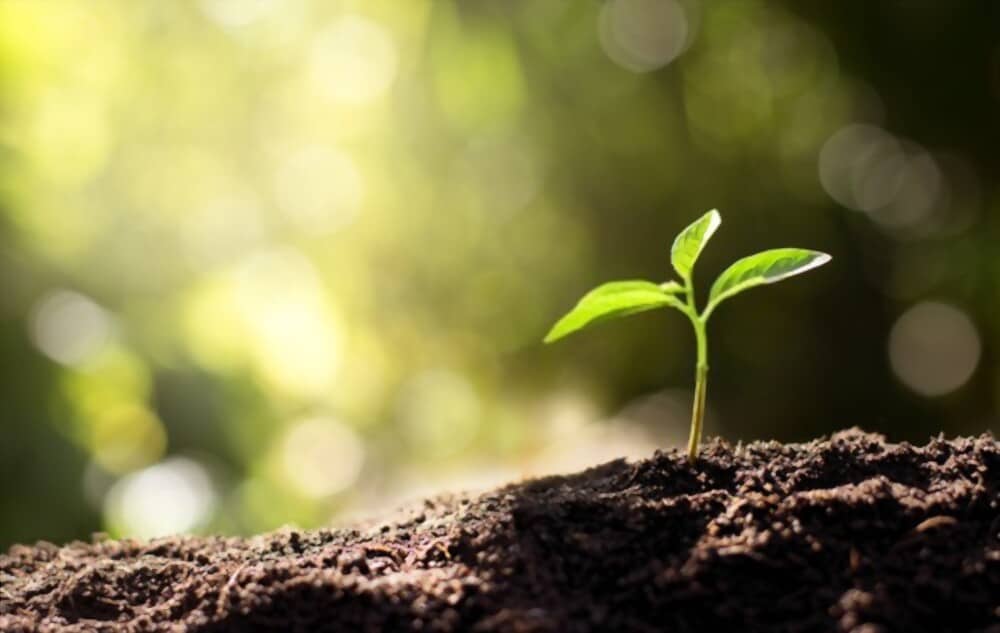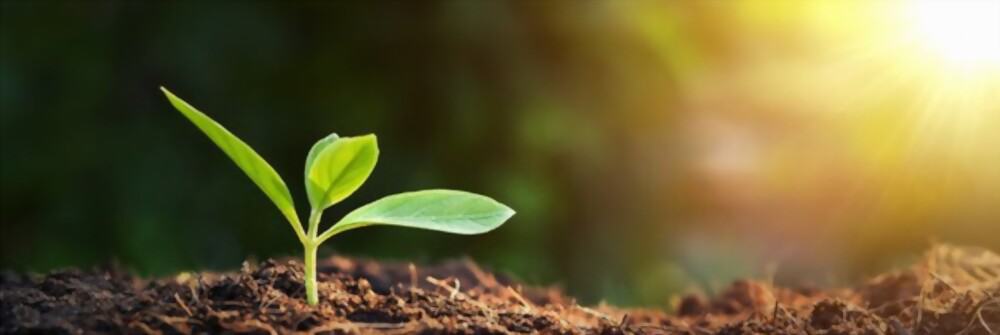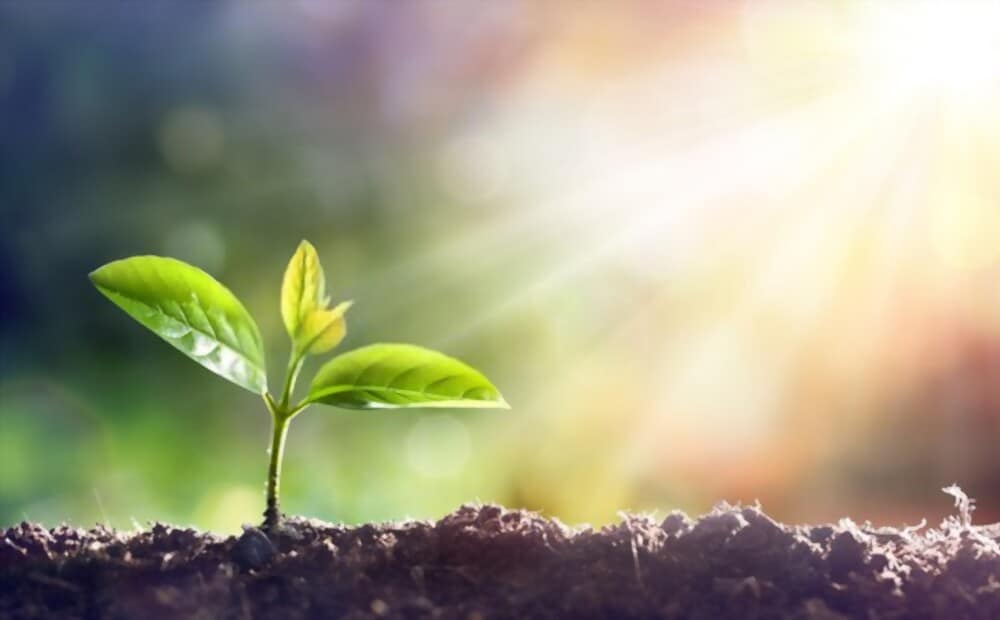
It’s difficult to safely transplant a plant without giving it transplant shock and stress. choosing how deeply to bury the plant during transplanting is especially important.
Depending on the type of plant, the plant or seedling can be buried up to two thirds of its stems when transplanted. When buried further into the soil, members of the nightshade family such as tomatoes, peppers, potatoes, and eggplants will generate healthier roots, leading to healthier plants.
On the subject of whether or not to bury deeply when transplanting your plants into the ground or containers, there is a lot of contrasting advice available.
We have addressed every conceivable question about how deeply a plant should be buried when transplanting in this succinct guide.
Table of Contents
Should You Bury Stems When Transplanting?

In general, any plant with a sturdy stem can be buried further. However, don’t simply bury the entire thing to kill it. If your stem is buried too deeply in the ground, it can begin to rot.
Plants whose Stem you can Bury
- Eggplant
- Tomatoes
- Cauliflower
- Peppers
- Broccoli
- Spinach
- Chilies
- Potatoes
- Cucumber
Therefore, it may be advantageous for the growth of the plant to bury them up to two-thirds of the stem, past the first set of leaves.
The leaves closest to the soil at the bottom of the plant can even be clipped or pruned to prevent the growth of fungus.
Obviously within context, tomatoes are the most popular plant that will grow stronger, thicker roots if their stem is buried deeper.
To transplant tomatoes successfully, bury the stem up to the first set of leaves.
When transplanting nightshade plant species (such as tomatoes, peppers, etc.), it is recommended to bury as much of the plant stem as possible.
When buried farther, the stem of these plants from the nightshade family will grow roots and promote a more robust, healthy plant.
Cucumbers and potatoes should always be subject to some kind of pest management, nevertheless, to ensure their survival.
For a fuller understanding of known pests and control strategies, see our in-depth articles on what causes holes in potatoes and what causes holes in cucumbers.
My plants stay healthy even after repotting thanks to the Miracle-Gro Potting Mix I get from Amazon. Clicking here will take you there.
Steps To Safely Bury The Stem When Transplanting:
You can properly bury the stem of your transplant without endangering it by following these instructions:
- Start by removing all the leaves from your plant’s lowest two-thirds.
- Next, dig a trench with your hands or a tool. When transplanting a plant from the nightshade family, especially tomatoes, the trench needs to be at least 3 inches (7 to 8 cm) deep.
If you are moving other plants, however, make sure to create a trench deep enough to bury several growth nodes, at least 1 inch (or 2 to 3 cm) below the lowest leaves.
Dig a trench 8 to 10 inches (20 to 26 cm) deep to cover numerous growth nodes and offer stable support if your transplant is larger.
- Now, carefully insert your chopped stem in the trench on its side (perhaps at a 45-degree angle). Therefore, the top portion of your transplant remains upright and in the open.
- After planting, gently cover the transplant with a thick layer of dirt and firmly press it into place.
NOTE: When refilling soil, use caution to avoid overly compacting it, as this has a negative impact on the soil’s drainage and aeration. Read more about compacting soil during transplanting in our article.
- Last but not least, give your plant enough of water so it can adjust to its new surroundings.
NOTE: To protect your transplant from the harsh, searing sun as it adjusts to its new position, it is preferable to transplant extremely early in the morning or late in the day.
Why is Transplanting Depth Important?
Choosing the proper time and depth to transplant your plant is one of the keys to doing so properly.
The general aim is to do it in late winter or early spring, before the plant starts its growing or flowering season.
When it comes to transplanting, plants can be highly temperamental and not very forgiving.
If the plant is not transplanted properly, you risk having stems that have decayed or very little fruit. The secret to a strong, resilient, and bountiful plant is to transplant in the appropriate water and depth.
The stem should be buried 1 to 1.5 inches (3 to 5 cm) below the bottom leaves when transplanting, according to the common rule of thumb.
With the exception of tomatoes, you can never go farther. You are free to bury them as deeply as you choose, even quite close to the actual leaves.
You will undoubtedly have roots emerging above ground if you do not deeply bury your plant or if you simply plant it one inch into the dirt.
When your plant develops more branches, shoots, and leaves, it won’t also have a stable base. If not planted at the proper depth, it can tip to one side.
On the other hand, avoid burying your plant too deeply (that is, you have buried the whole stem and now the bottom leaves are almost touching the ground).
The fungus may develop because of damp soil if your leaves are too close to the ground.
To maintain your plant’s correct and healthy growth, it is crucial that you bury the stem at the proper depth when transplanting.
Deep transplanting can help your plant produce deeper, healthier roots in the soil, offering it good support as it grows older.
However, having thicker, healthier roots along the stem isn’t the only benefit of sinking your transplant deeper.
Not all plants develop roots along the stem, as was noted earlier in the article.
However, burying them a bit deeper will undoubtedly give your plant additional advantages, such as stronger stem support, warmer soil, water retention, and so forth.
We have outlined a few advantages of deep transplanting below.
1. Plant Support
When a plant is transplanted, it is imperative to give it the support it will need as it grows heavier with larger leaves and fruits.
Your plant will grow upright if the stem is deeply buried in the soil. The plant will have sufficient support to withstand windy days.
Plants will be able to grow healthier, stronger roots, which will improve the plant’s standing in the soil.
Additionally, your plant will grow more healthy, robust blossoms as well as new roots and blossoms.
When it’s windy, planting tomatoes and cucumbers with the assistance of a trellis can also help the plant stay upright and sturdy.
2. Ensuring That The Roots Dont Show and is Fully Covered
The roots can develop above earth if they are not planted at the proper depth, as we previously mentioned.
Deep transplantation will guarantee that all of the roots that are growing along the stem are kept underground.
For information on how to prevent plant roots from showing, see our in-depth article.

Can You Bury Leggy Plants To Help With Support?
The size and type of your plant will determine this. Deep transplanting might help with giving a young plant or seedling good support.
One of the main causes of leggy plants, among other things, is light. Our houses’ and porches’ lighting can have a big impact on the growth of the plants in our gardens.
To learn more about how porch light affects plants and what you can do about it, see our in-depth article.
- Provide artificial light. When your plant produces larger stems, shoots, and leaves, it won’t also have a solid base to stand on. Insufficient planting depth could cause it to tip to one side.
But you shouldn’t bury your plant too deeply either (that is, you have buried the whole stem and now the bottom leaves are almost touching the ground).
The fungus may develop owing to soil dampness if your leaves are placed too close to the ground.
- Because of this, it’s crucial to ensure your plant’s stem is buried at the optimum depth while transplanting to promote its normal and healthy growth.
- In order to give your plant appropriate support as it grows older, deep transplanting can ensure that it has stronger, healthier roots formed in the soil.
- Although having thicker, healthier roots along the stem is one benefit of burying your transplant deeper, there are other benefits as well.
- Not all plants develop roots along the stem, as we noted in the article’s introduction.
- However, burying them a bit deeper will undoubtedly benefit your plant in other ways, such as greater stem support, increased soil warmth, increased water retention, and so forth.
- We’ve covered a few advantages of deep transplanting down below.
- As the plants become heavier with larger leaves and fruits, transplanting is a vital time to give them the support they will need for future development.
